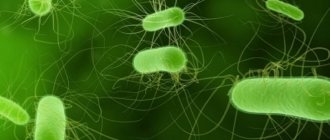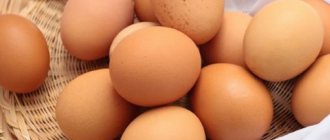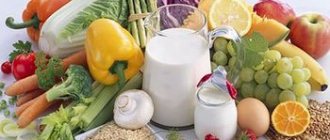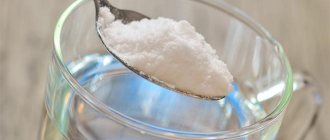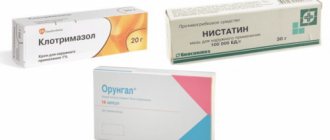Diarrhea in children, especially young children, is not only an unpleasant symptom, but also very dangerous. During diarrhea, the body loses a large amount of fluid, and with it vital vitamins and microelements. Diarrhea may be accompanied by vomiting, fever, general weakness and other associated symptoms.
If your baby experiences frequent loose stools, an urgent medical consultation is necessary to determine its causes. Depending on the causes and accompanying symptoms, treatment and appropriate nutrition will be prescribed. What kind of diet is needed for diarrhea in a child?
How to determine the cause of diarrhea in a child
A child very rarely wants to eat if his tummy hurts
In order to choose a diet for a child, you need to determine the cause of diarrhea, based on this, therapeutic nutrition will be prescribed. Symptoms of poisoning:
- Deterioration of general condition
- Weakness
- Heat
- Irritability
- Vomit
- Abdominal pain
- Nausea
Poisoning most often begins to manifest itself with the appearance of vomiting, then the temperature rises sharply and frequent diarrhea occurs.
This condition is very dangerous due to extreme dehydration of the body. Therefore, it is first necessary to replenish the fluid lost from the body due to infection.
Why is diarrhea dangerous for adults?
Acute diarrhea in adults is dangerous because it can become chronic. In this case, loose stool haunts a person every day for a month or more. This significantly affects a person’s overall well-being, performance, immunity and, of course, quality of life. In this case, you need to consult a doctor and undergo a comprehensive examination and treatment. Find out the cause of diarrhea and eliminate it!
Diarrhea is also dangerous due to the development of complications such as:
- Dehydration.
- Heart rhythm disturbances, convulsions, muscle pain.
— Cachexia is a state of extreme exhaustion of the body.
First aid
As soon as the child shows signs of poisoning, he needs to undergo gastric lavage. For this, clean drinking water at room temperature is used at the rate of 0.02 liters per 1 kg of baby’s weight. After the baby drinks the required amount of liquid, he will begin to vomit. Then you need to give him sorbents:
- Filtrum
- Activated carbon
- Enterosgel
- Lactofiltrum
The main stages of recovery of a child’s body with diarrhea
Therapeutic nutrition for diarrhea should take place in several stages:
- Restoring lost fluid
- Frequent and small meals
- Eating easily digestible and light foods that cannot damage the intestinal mucosa
- Dietary food appropriate for the child's age
What to give a child with diarrhea
If a child has diarrhea, you need to take him off water
If there is no vomiting, you can start giving the child small doses (preferably from a spoon). There are many preparations containing mineral salts to replenish and retain fluids entering the baby’s body:
- Oralit
- Regidron
- Electrolyte
- Gastrolit
In addition to special preparations, you can use decoctions and compotes, which, in addition to replenishing fluid, will provide the body with vitamins and minerals lost during illness in order to restore strength and fight the consequences of the disease:
- Rice congee
- Rose hip tea
- Chamomile drink
- Compote without sugar from dried fruits
- Blueberry juice
- Compote with raisins
- Carrot broth
- Medicinal mineral water without gas
To prepare a solution that can replenish the required amount of salt in the body, you need to take half a teaspoon of salt, soda and sugar per glass of water. You can feed your baby with this solution from a spoon every five minutes. Recipe for a drink to restore vitamins in the body: Take a banana, mash it with a fork, add half a spoon of salt and a spoon of sugar and pour in a liter of water.
Food
After the appearance of loose stools, you must immediately change your diet. All food should have a binding and astringent effect. You need to choose foods that inhibit intestinal motility.
Important: it is recommended to follow a diet for several days, removing baked goods, sweets, fatty and fried foods, spices, dairy products, vegetables and fruits. Most often, after the onset of diarrhea on the first day, only tea with crackers is allowed.
But you need to drink as much as possible to replenish fluid losses. In addition to regular water, it is recommended to drink drinks that help get rid of diarrhea. This is strong black tea without sugar, green tea, blueberry decoction with berries or blueberry jelly. Tea made from mint, chamomile, coffee or cocoa without milk, compote made from black currants or dried pears are also effective. It is recommended to drink jelly several times a day. You can also simply dilute a tablespoon of starch in a glass of water and drink. And instead of drinking tea, you can chew half a teaspoon of tea leaves and wash it down with water.
Blueberry jelly is an effective remedy for diarrhea.
A remedy made from soaked rye bread stops diarrhea well. You need to leave it for 20-30 minutes. Strain the resulting mixture and drink little by little throughout the day. And for chronic diarrhea, it is recommended to drink a glass of infusion of peeled walnuts every morning. A decoction of sunflower seeds is also effective. It is made from 250 g of seeds and 500 ml of water. You need to take 100 ml of the decoction after meals.
This recipe is popular: eat a peeled and pureed apple every 1-2 hours. A total of 12 pieces will be required. It is advisable not to eat anything else during this treatment. Grated boiled carrots also have a similar effect. It should be eaten 2/3 glass before each meal.
A tasty cure for diarrhea is made from viburnum berries. They are used to make a thick, rich compote (100 g of berries per 500 ml of water). After filtering, it is mixed with 90 ml of honey. Take half a glass of the product before each meal. You can also prepare medicine from bird cherry berries in advance. 100 g of fresh berries should be poured with a bottle of high-quality red wine. Leave for a week in a warm place. Take 50 g 3 times a day.
What to feed a baby with diarrhea
During an acute period, accompanied by fever and nausea, the baby should be fed light semi-liquid or puree foods. Vegetables and cereals are cooked with more liquid than usual and ground. The meat is served in the form of puree or soufflé; the fish must be cleaned of all bones, steamed and mashed with a fork.
If a child refuses to eat, there is no need to force him to eat, as this may cause vomiting. You cannot feed your child foods that he has chosen himself; they can be harmful to his fragile intestines. Such products include:
- Chips
- sparkling water
- Candies
- Chewing gum
- Chocolate
With their help, you can cause irreparable harm to the body: against the background of a diseased intestine, inflammation of the pancreas or liver failure can develop. In addition to dietary meals, complex vitamin preparations are prescribed to restore nutrients lost with diarrhea and vomiting.
You should not feed your child foods that can increase intestinal motility and stimulate bile production. Such foods can cause fermentation in the intestines:
Help with diarrhea in adults
It is better to start treating diarrhea as soon as you realize that loose stools are not an isolated case. Depending on the causes of diarrhea, the doctor will prescribe a comprehensive treatment, but here are the general rules that should be followed by all patients with diarrhea.
1. Start taking antidiarrheal medications
Treatment should begin with drugs that have an antidiarrheal effect, that is, they are ways to stop diarrhea. There are a huge number of antidiarrheal drugs, but you should choose one that is not only effective, but also safe. Adiarin is one of these remedies. This product is based on a fundamentally new active ingredient - tannate gelatin, which not only acts quickly and stops diarrhea, but also protects the intestines from the aggressive effects of factors that provoke it (viruses, toxins, bacteria). It creates a special protective bio-barrier on the damaged mucosa of the small intestine, which stops inflammation, restores the integrity of the intestinal epithelium and normalizes its physiological functions, preventing the development of dehydration. In this case, the drug works only in the intestines and has no effect on the body as a whole.
After the condition improves and the frequency of loose stools decreases, it is the turn of enzyme preparations and probiotics. They help restore microflora and restore the stomach and intestines to function normally.
2. Drink more fluids
With diarrhea, the body loses a lot of water and electrolytes. You can replenish fluid deficiency with an increased water regime, but special rehydration solutions cope best with dehydration, because they contain the necessary salts and microelements.
3. Follow a gentle diet
It is necessary to exclude all “irritants” from the diet: spicy, salty, sour, coarse fiber. Also limit everything that stimulates the production of bile (tomatoes, carrots, fatty foods, juices). Remove foods that cause gas formation: cabbage, milk, apples.
Following these recommendations will allow you to cope with a common episode of diarrhea in a few days. But if diarrhea lasts longer than 5-7 days and you do not feel any improvement, you should immediately consult a doctor.
Diet for infants
You should not force your child to eat
Despite the fact that doctors previously recommended abstaining from any food at all, modern pediatricians do not adhere to this concept. Lack of nutrients during fasting will negatively affect the development of the baby, lack of protein for his growth, sudden weight loss, and decreased immunity.
In such conditions, it will be very difficult for the baby’s body to recover quickly, tissue regeneration will slow down and the intestinal mucosa will be damaged for a long time. Therefore, it will be impossible to switch to regular food for a long time.
For breastfed babies, it is recommended to continue feeding much more often, while reducing the single dose.
Breast milk is an indispensable product for babies up to one year old, even during diarrhea: the biological active substances it contains help strengthen the immune system and help the baby cope with the disease.
Feeding bottle-fed babies must be approached individually. The amount of mixture is determined based on the frequency of regurgitation and the presence or absence of vomiting. Feeding should be done every 2 hours, the volume of the mixture should be 50 ml. On the 4th day, feeding is gradually transferred to normal mode. Babies from five months of age are allowed to feed with dairy-free rice or buckwheat porridge. Children aged eight months need to add yolk, meat broth, jelly and meat puree to their diet.
What is diarrhea?
Diarrhea - frequent loose stools (more than 3 times a day). A distinctive feature is watery stool, which is more than 90% liquid.
Diarrhea is a syndrome, not a disease. It indicates that the body has a malfunction of the gastrointestinal tract. For various diseases, diarrhea syndrome has its own distinctive characteristics.
Causes of diarrhea
Diarrhea is a symptom of many diseases and pathological conditions of the gastrointestinal tract (GIT).
The most common cause of diarrhea is viral infections (rotaviruses, noroviruses, adenoviruses and others) or bacterial infections such as dysentery, salmonellosis and others.
But diarrhea can also develop under the influence of medications, for example, antibiotics and antiarrhythmic drugs. It may be the result of individual intolerance to a particular food product, the so-called food allergy. Diarrhea can be caused by errors in diet or abuse of fatty, heavy foods. It accompanies a number of chronic gastrointestinal diseases (gastritis, pancreatitis, ulcers) or is a manifestation of irritable bowel syndrome.
But it is important to know that if we are talking about adults, then most often their diarrhea is a consequence of poisoning with spoiled or low-quality products, the so-called foodborne toxic infection. Typically, food poisoning has a clear clinical picture: in addition to frequent loose stools, there is vomiting, weakness, and fever with high body temperature. It develops rapidly and lasts from 1 to 3 days.
Often, diarrhea in adults occurs during travel, especially if it is a trip to exotic countries. There is even a special term - traveler's diarrhea; up to 30% of all tourists visiting exotic countries suffer from it. Intestinal upset in this case is associated with changes in climatic conditions, adaptation to new water, food, spices, stress due to flight or lowered hygiene standards in a number of countries.
Diet for children over one year old
At the onset of the disease, it is necessary to add two more meals between feedings and reduce the amount of food per meal. The amount of food increases daily. A diet for diarrhea in a child includes eating cereal soups:
- Rice
- Buckwheat
- Perlovova
Then you can switch to porridge from the same cereals. You can give your baby pureed soups with vegetables:
- Potatoes
- Carrot
- Zucchini
- pumpkin
These vegetables are good for the intestines, because when cooked they contain a large amount of pectin - a substance that can bind water and swell, forming a mass that, passing through the esophagus, adsorbs the remains of microorganisms, bacteria and toxic substances.
When exposed to an acidic environment, pectin breaks down into microelements, including calcium, which has an anti-inflammatory and restorative effect for the intestines. Fresh berry jelly is good as a dessert. For diarrhea, jelly and blueberry fruit drinks are preferable.
Eating thermally processed vegetables and fruits helps to eliminate the symptoms of intoxication and normalize stool. You can include jellies, compotes, fruit drinks and mousses with the addition of lemon or cranberry juice in your diet. On the third day, it is allowed to include fermented milk products in the diet to restore the intestinal microflora:
Most popular recipes
Since diarrhea is a fairly common problem, most people know at least one effective folk remedy for getting rid of diarrhea. Most often they are used for irritable bowel syndrome, food allergies, after taking antibiotics or overeating. Usually the most common components that are available to everyone are used for this. These can be decoctions of herbs, food, peels of fruits and nuts. Traditional medicine offers many simple and effective recipes that will help get rid of diarrhea in a couple of days.
First of all, this is rice water. This remedy is known to many and is often used for diarrhea, even in young children. Rice water has astringent, adsorbing and bonding properties. It has a mild effect without irritating the mucous membrane, so it can be used even for serious pathologies of the digestive system. To prepare the decoction, you need to cook the rice by adding 7 cups of water to 1 cup of cereal. After it boils a little and the water turns into mucus, the broth needs to be strained. Take 100 ml every 2 hours.
Another effective and safe remedy that can be used for diarrhea in both adults and children is chicken gizzard lining. It must be carefully removed, washed, dried and crushed. And for diarrhea, it is enough to eat a teaspoon of this powder with water. Diarrhea usually goes away after the first dose.
A popular folk remedy that can stop diarrhea is a decoction of pomegranate peel. Many housewives collect and dry pomegranate peels specifically for these purposes. If diarrhea occurs, add 2 tablespoons of dry peel to half a liter of water and boil for 15 minutes. You need to take a teaspoon of the decoction three times a day.
An equally powerful remedy that quickly stops diarrhea is walnut partitions. But you need to collect them in advance. To prepare the medicine you will need 300 g of nuts. Place all the partitions in a jar and pour in 250 ml of vodka. You need to infuse the product for 2 days. Take 6-10 drops for diarrhea, adding them to half a glass of water. This infusion is drunk 4 times a day. It can only be used by adults.
Attention: all these remedies are very strong, so they can be taken in strict dosage and only until stool normalizes. Exceeding the dose or prolonged use may lead to persistent constipation.
Recipes for diarrhea in a child
Meat soufflé in a water bath
- Lean meat – 100g
- White bread
- Egg – 1 piece
- Vegetable broth – 50 g
- Clean the meat from films, fat and tendons and cook until soft.
- Soak the bread in the broth and pass through a sieve.
- Cut the boiled meat into pieces, pass through a meat grinder, add bread, broth and a raw egg to it.
- Mix everything and put it in the mold. Place the mold in a pan with water and put in the oven for half an hour.
Diet rice porridge
Boil rice in water until sticky. Take a glass of water for 2 tablespoons of rice. Pour half a glass of milk into the almost finished porridge, add sugar and salt to taste and bring to a boil. Remove the pan from the heat and rub the porridge through a sieve. Place the pureed mixture back into the saucepan and simmer for a minute over low heat. You can add a little butter. Diet porridge is ready.
The importance of diet in the treatment of diarrhea in children is enormous! Only with proper nutrition will you be able to achieve the desired effect - the baby’s recovery.
